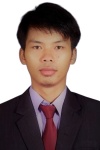Comparison of Plankton Abundance, Water Conditions, Performance of Vaname Shrimp (Litopenaeus Vannamei) Growth in Intensive and Extensive Cultivation Systems in Banyuwangi Regency Waters
Downloads
Vaname is one type of shrimp that is often cultivated in Indonesia. The shrimp farming system model consists of an extensive system (traditional) and an intensive system. This study aims to compare the abundance of plankton, water conditions, growth performance of vannamei shrimp (Litopenaeus vannamei) in intensive and extensive aquaculture systems in the waters of Banyuwangi Regency. Parameters measured include physical and chemical parameters, namely temperature, brightness, pH, dissolved oxygen, salinity, ammonia, and alkalinity, type and abundance of plankton. The research method used is descriptive method. The method of analysis is the abundance of plankton, and analysis of productivity, SR, FCR and growth of vannamei shrimp. The results showed that plankton in intensive pond waters were identified as many as 4 classes, namely phytoplankton class Chlorophyta, Cyanophyta and Chrysophyta, while zooplankton class Protozoa. In traditional ponds, it is not much different, only the Crpytophyta class as an additional identification result. The abundance of plankton in intensive ponds reaches 27,595 individuals per liter, while for extensive ponds the abundance of plankton reaches 37,641 individuals per liter. While the survival rate of shrimp in intensive ponds is around 86%, while in extensive ponds is 67%. The FCR value for extensive ponds is 1.02, while the FCR value for intensive ponds is 1.17. The final average weight of shrimp in intensive ponds was 11.76 g/head and 8.33 g/head in extensive ponds.
Keyword : Vaname Shrimp, Intensive Cultivation, Extensive
Amirna, O., R., Iba dan A. Rahman. (2013). Pemberian silase ikan gabus pada pakan buatan bagi pertumbuhan dan kelangsungan hidup udang vaname (Litopenaeus vannamei) pada stadia post larva. Jurnal Minat Indonesia Vol. 01 No. 01 hal. (93-103) ISSN : 2303-3959.
Babu, D., Ravuru, J.N. Mude. (2014). Effect of Density on Growth and Production of Litopenaeus vannamei of Brackish Water Culture System in Summer Season with Artificial Diet in Prakasam District, India. American International Journal of Research in Formal, Applied, & Natural Sciences. 5(1):10-13.
Diatin, I., S. Arifianty dan N. Farmayanti. (2008). Optimalisasi Input Produksi pada Kegiatan Budidaya Udang Vanname (Litopenaeus vannamei): Studi Kasus pada UD Jasa Hasil Diri di Desa Lamaran Tarung Kecamatan Cantigi Kabupaten Indramayu. Jurnal Akuakultur Indonesia, 7(1): 39-49.
Kordi, K.M.G.H. 2010. Budidaya Udang Laut. Lily Publisher. Yogyakarta.
Lailiyah Ulya Syofroul, Sinung Rahardjo, Maria G.E. Kristiany, Mugi Mulyono. (2018). Productivity Of Vaname Shrimp Cultivation (Litopenaeus vannamei) Super Intensive Pond in PT. Dewi Laut Aquaculture Garut District, Province, Jawa Barat. Jurnal Kelautan dan Perikanan Terapan JKPT Vol: 1 No: 01.
Nababan, E., Putra I., dan Rusliadi. (2015). Pemeliharaan udang vaname (Litopenaeus vannamei) dengan persentase pemberian pakan yang berbeda. Jurnal Ilmiah Perikanan dan Kelautan Vol. 3 No. 2.
Nuhman. (2009). Pengaruh Prosentase Pemberian Pakan Terhadap Kelangsungan Hidup dan Laju Pertumbuhan Udang Vanname (Litopenaeus vannamei). Jurnal Ilmiah Perikanan dan Kelautan Vol. 1, No. 2.
Rahman Ega Cahyadi, Masyamsir, dan Achmad Rizal. (2016). Kajian Variabel Kualitas Air Dan Hubungannya Dengan Produktivitas Primer Fitoplankton Di Perairan Waduk Darma Jawa Barat. Jurnal Perikanan Kelautan Vol. VII No. 1: 93-102.
Setyobudiandi, I., Sulistiono, Yulianda, F., Kusuma, C., Hariyadi, S., Damar, A., Sembiring, A. dan Bahtiar. 2009. Sampling dan analisis data perikanan dan kelautan: terapan metode pengambilan contoh di wilayah pesisir dan laut Makaira, FPIK, IPB, Bogor.
Sopha, S., L. Santoso, B. Putri. (2015). Pengaruh Substitusi Parsial tepung Ikan dengan Tepung Tulang Terhadap Pertumbuhan Ikan Lele Sangkuriang (Clarias gariepenus). Jurnal Rekayasa dan Teknologi Budidaya Perairan. 3(2): 403-409.



















